Planning your own trip? Prepare for your trip
Use Rough Guides' trusted partners for great rates
Plan and book your private, tailor-made tour with vetted local experts
The Rio Minho flows into the Atlantic about 100 km north of Porto, marking Portugal’s border with Spain and shaping centuries of history on both sides. Its name extends to the wider Minho region, a corner of Portugal that feels like the country in miniature. You’ll find vineyard-covered hills, medieval towns, river valleys, wild Atlantic beaches, and mountain villages where old traditions still thrive.
It’s a region that rewards both slow wandering and easy day trips. Roads link the main towns with remote hamlets in just over an hour, while trains and buses cover the key routes. With Porto airport as a gateway, the Minho is one of the most accessible parts of northern Portugal, yet it still feels distinct and proudly local.

Hey, I’m Joel, your Portugal travel expert, and the Minho is the part of the country I return to whenever I want to see Portugal at its most authentic. This is the northwest corner where rivers meet vineyards, where medieval towns still hum with local life, and where the Atlantic crashes against wild beaches. From the valleys of the Rio Minho and Lima to the granite peaks of Peneda-Gerês National Park, the variety here feels like Portugal in miniature.
This Minho travel guide will give you the essentials: how to get here, when to come, and where to stay. My advice is not to rush. Spend time in towns like Braga or Guimarães, follow the river up through vineyard country, and don’t skip the smaller villages where festivals spill into the streets.
Joel’s tip
Rent a car. Public transport covers the main towns, but the best of the Minho lies in the spaces between: tiny villages, vineyard backroads, and viewpoints that buses never reach.
Best time to visit
Spring and autumn are ideal, with mild weather, green hillsides, and fewer crowds at the big monuments. Summer brings long days and plenty of festivals, but also more visitors, especially in Braga and Guimarães. Winter is cooler and wetter, yet the towns remain lively, and the Atlantic coastline has a dramatic charm.
How to get to the Minho
From Porto, you can reach Braga by train in under an hour, and Guimarães in just over an hour. Both towns make great starting points. Driving is the easiest way to cover more ground: it takes about 90 minutes to reach the mouth of the Minho River from Porto, and less than an hour to get into the Lima Valley. If you are flying, Porto Airport is the most convenient entry point.
Best areas to stay in the Minho
The Minho region lies in the far northwest of Portugal, stretching from the Atlantic coast to the mountains of Peneda-Gerês and up to the Rio Minho, which forms the border with Spain. It is about 100 km north of Porto and easy to reach by car, bus, or train.
Often highlighted among the best places to visit in Portugal, the Minho fits neatly into a Portugal itinerary, especially if you are starting in Porto. You can explore historic cities such as Braga and Guimarães, drive through vineyard-covered valleys, or follow the coast to beaches near Viana do Castelo. The mountains of Peneda-Gerês National Park add another layer of adventure, with hiking trails, waterfalls, and remote villages that feel far removed from modern life.


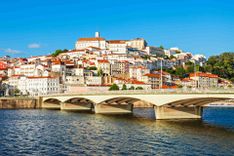
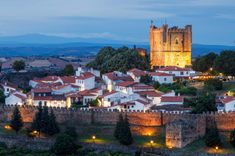

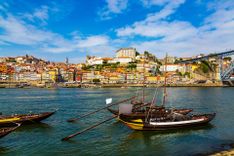










The Minho covers a wide area, from coastal towns like Viana do Castelo to the mountain villages of Peneda-Gerês, so how you move around depends on what you want to see. Trains and buses connect the main towns, but many of the best viewpoints, villages, and hiking routes are easiest to reach by car.
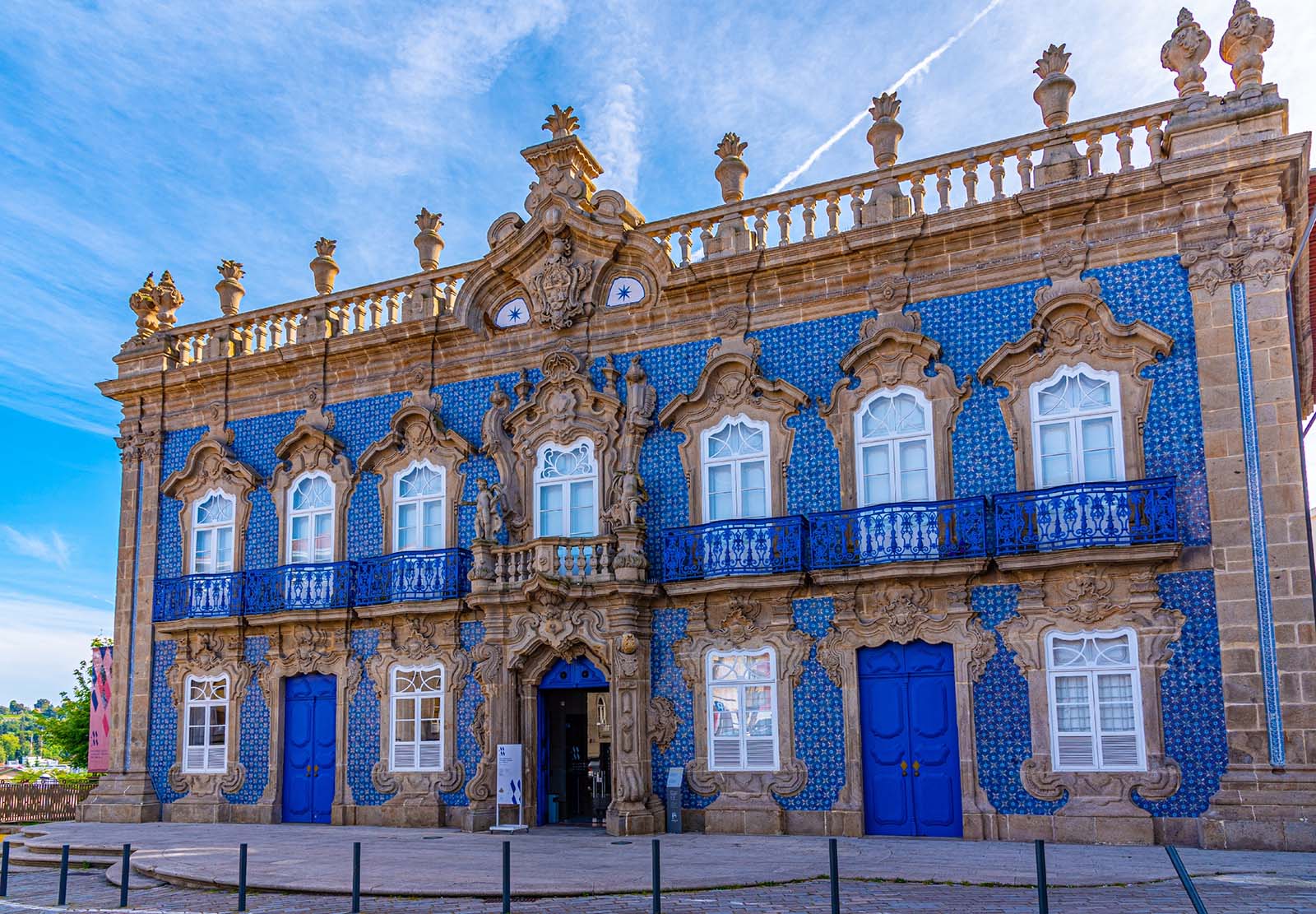
Palacio do Raio in Braga, Portugal © Shutterstock
You can get a taste of the Minho on a day trip from Porto, especially if you focus on one town such as Braga or Guimarães. A single day lets you see key sights like Braga’s Bom Jesus do Monte or Guimarães Castle and still enjoy a long lunch in the old town.
Stay longer, though, and the region opens up. With two or three days, you can combine the historic towns with vineyard valleys, riverside walks, or a drive along the Atlantic coast to Viana do Castelo. Evenings feel different here, with quieter squares, grilled fish on the coast, or festivals filling village streets with music.
If you are planning a 10-day Portugal itinerary, give the Minho at least three or four days. That allows time for the main towns, a detour into Peneda-Gerês National Park for hiking or waterfalls, and slow journeys through the Lima Valley with stops in Ponte de Lima or Arcos de Valdevez. More days mean more contrasts: mist rising from the river at dawn, the echo of bells in a mountain chapel, and the crash of Atlantic surf at sunset.
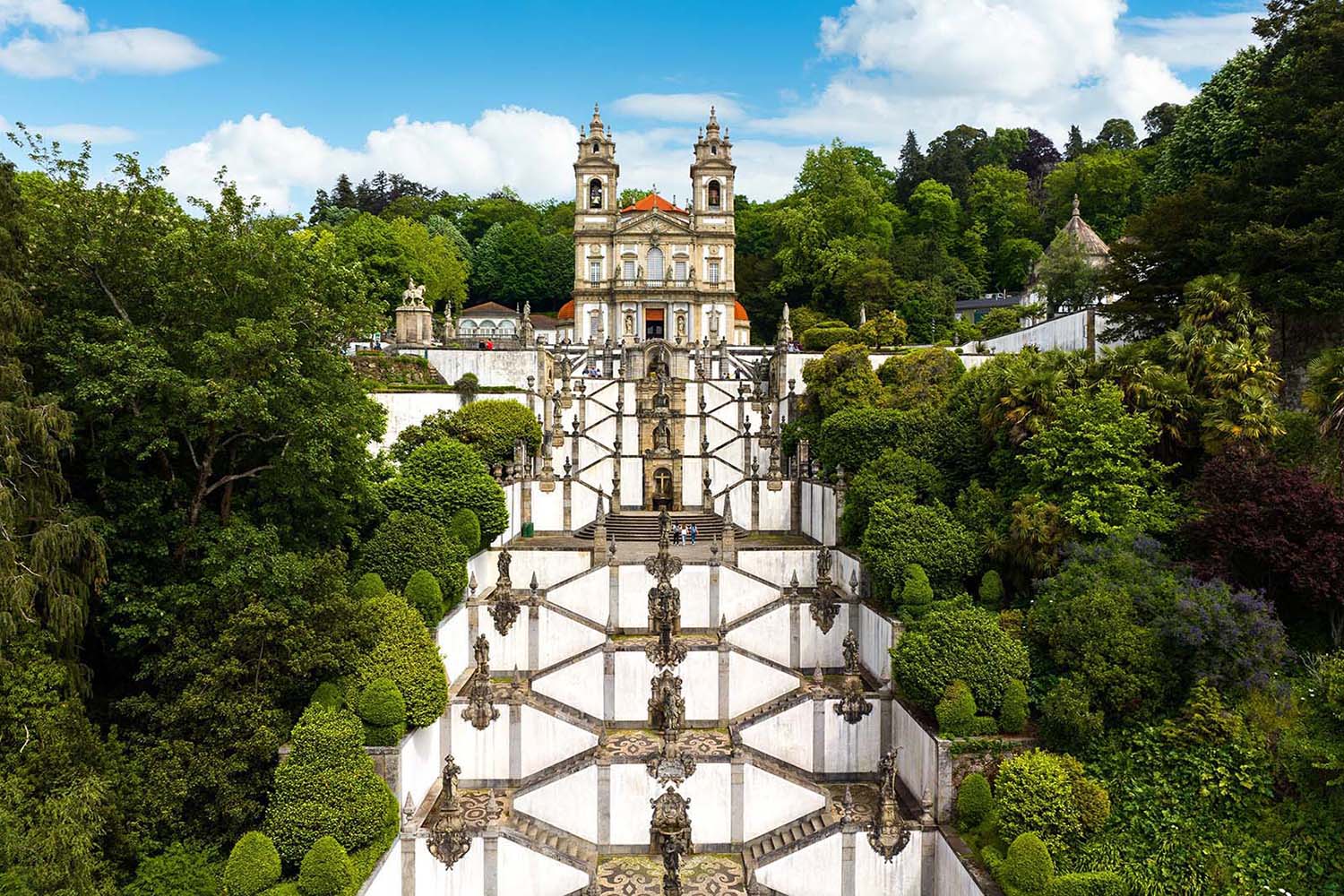
View of the Sanctuary of Bom Jesus do Monte in Braga, Portugal © Shutterstock
The Minho offers everything from boutique hotels in historic towns to vineyard estates and mountain lodges. Where you base yourself depends on the kind of trip you want.

Peneda Geres National Park, Portugal @ Shutterstock
The Minho is one of Portugal’s most rewarding regions to explore, combining historic towns, vineyard valleys, dramatic coastline, and mountain wilderness. You could spend weeks here and still only scratch the surface. Here are the best things to do in the Minho, each one worth slowing down for.
Just outside Braga, the Sanctuary of Bom Jesus is one of Portugal’s most iconic religious sites. The baroque stairway climbs 116 meters in zigzagging terraces lined with fountains and statues, a physical and spiritual ascent that pilgrims have made for centuries. You can ride the 19th-century funicular, still powered by water, but walking the staircase is the classic experience.
At the top, the church terrace offers sweeping views over Braga and the Minho plains. Early morning is the most atmospheric time, with mist still clinging to the valley, while sunset paints the granite staircases gold.
Guimarães is often called the “birthplace of Portugal”, it was here that Afonso Henriques, the country’s first king, declared independence in the 12th century. The medieval castle still crowns the hill, its towers linked by rugged stone walls. Next door, the Paço dos Duques is a 15th-century palace with timbered halls and imposing Gothic chimneys.
The historic center, a UNESCO World Heritage Site, is equally compelling. Wander cobbled squares like Largo da Oliveira, lined with arcades, stone churches, and lively cafés. Stay until evening, when lanterns light the façades and the town feels like it has barely changed in centuries.
Braga is one of Portugal’s oldest cities, founded by the Romans and still nicknamed the “Portuguese Rome” for its concentration of churches. The cathedral, Sé de Braga, dates to the 11th century and mixes Romanesque, Gothic, and Baroque styles. Inside, you’ll find ornate tombs and gilded altars that reflect centuries of wealth and devotion.
Away from the cathedral, the town is lively rather than solemn. Praça da República is lined with cafés, while Avenida da Liberdade bursts with flowers in spring. If you can, visit during Holy Week, when processions fill the streets with incense and chants.

Aerial View of Guisi Lighthouse in Guimaras © Shutterstock
Ponte de Lima, often described as Portugal’s oldest town, is defined by its graceful Roman bridge across the Lima River. Legend says soldiers once hesitated to cross, believing it was the mythical Lethe, the river of forgetfulness. Today, the bridge is a serene place for a stroll, with reflections of tiled houses and church towers on the water.
The town itself is charming, with arcaded squares, leafy riverside parks, and a strong culinary tradition: sarrabulho rice, made with pork and spices, is the local specialty. Market day (every other Monday) fills the streets with stalls and gives the town its most vibrant atmosphere.
Viana do Castelo sits where the Lima River meets the Atlantic, a place long tied to shipbuilding and exploration. Its historic center is filled with Manueline architecture, azulejo-covered churches, and elegant plazas. The Gil Eannes, a former hospital ship moored in the harbor, tells stories of Portugal’s fishing fleets in the icy North Atlantic.
Ride the funicular up Monte de Santa Luzia for one of the best views in northern Portugal: the basilica dome in the foreground, the river winding to the sea, and sandy beaches stretching along the coast.
Portugal’s only national park is a rugged expanse of granite peaks, oak forests, waterfalls, and remote villages. Trails range from short walks to full-day hikes, many leading to cascades where you can swim in summer. Wildlife includes wild ponies, golden eagles, and herds of long-horned cachena cattle grazing on mountain pastures.
Don’t miss the villages of Soajo and Lindoso, known for their espigueiros, stone granaries perched on stilts like miniature temples. Evenings here are quiet, with just the sound of church bells and the rush of mountain streams.
The Minho is the home of vinho verde, Portugal’s young “green wine,” crisp and slightly sparkling. Vineyards stretch across the Lima and Cávado valleys, where you can tour family estates, learn about the tradition of training vines high on pergolas, and sample whites, rosés, and light reds paired with regional cheeses and cured meats.
Many quintas welcome visitors with tastings in shaded courtyards. The experience is less formal than in the Douro, often with the winemaker pouring your glass and telling stories of the land.

Cavado river and Peneda-Geres National Park in northern Portugal © Sergey Peterman/Shutterstock
The Minho’s coastline is wilder and less developed than the Algarve, but it is home to some of the best beaches in Portugal if you prefer space and scenery over crowds. Cabedelo, Afife, and Moledo offer wide stretches of sand backed by dunes and pine forest. The surf is strong, attracting windsurfers and kitesurfers, while quieter coves are perfect for long walks and picnics.
Moledo, near the mouth of the Rio Minho, has views across to Spain and a relaxed holiday feel in summer, when seafood restaurants serve freshly grilled sardines and clams. Its combination of Atlantic waves, pine-scented air, and fresh seafood makes it one of the most rewarding coastal stops in northern Portugal.
History in the Minho runs deep. At Citânia de Briteiros, an Iron Age hillfort near Guimarães, you can walk among stone foundations of circular houses, streets, and walls that predate the Romans. The site is atmospheric at sunset, with the Serra do Carvalho hills as a backdrop.
Other highlights include the Castro de Santa Trega on the Spanish side of the river and the dolmens scattered through the Minho countryside, reminders that this has been a settled land since prehistory.
The Minho is famous for its festas, some of the liveliest in Portugal. In Braga, Holy Week processions are solemn and dramatic. In Viana do Castelo, the Romaria da Senhora da Agonia in August fills the streets with parades, gold-laden costumes, and fireworks. Ponte de Lima’s Feira do Cavalo celebrates the region’s horse-breeding traditions, while small villages host harvest festivals with music, dancing, and tables groaning with food.
Attending a local festa is the best way to feel the Minho’s spirit, communal, colorful, and deeply rooted in tradition.
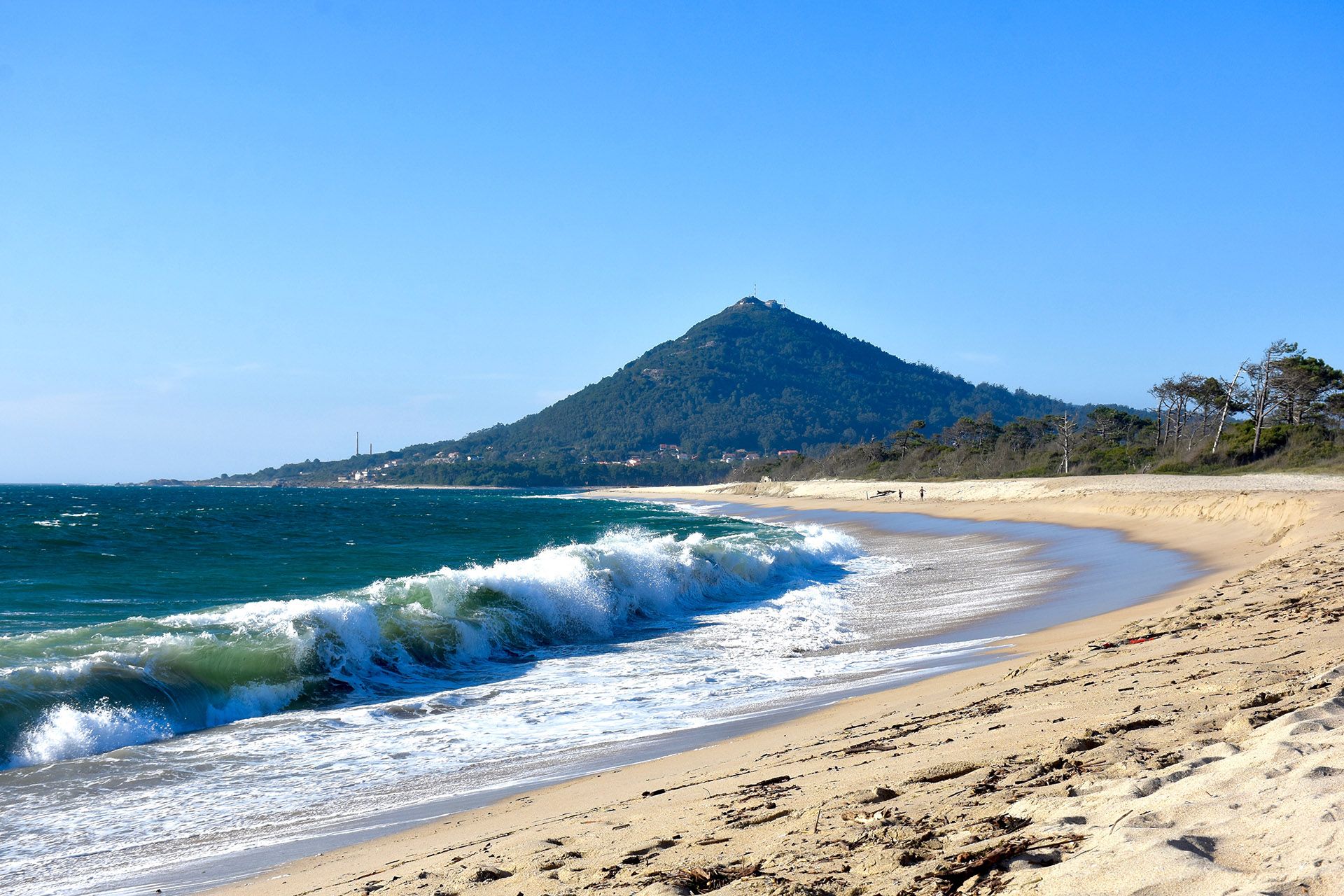
Moledo beach. Caminha. Viana do Castelo. Portugal © Vita Borges/Shutterstock
The Minho has a classic Atlantic-influenced climate: mild, wet winters and warm, drier summers. Rain is more frequent here than in much of Portugal, which explains the region’s famously green landscapes and fertile valleys. Average temperatures range from about 45°F (7°C) in January to 82°F (28°C) in August. Coastal towns such as Viana do Castelo stay cooler in summer thanks to sea breezes, while inland valleys can be noticeably hotter. For current forecasts, check IPMA (Portuguese Institute for Sea and Atmosphere).
When planning the best time to visit Portugal, the Minho is most appealing in spring and autumn, when the hills are lush, rivers are full, and towns buzz with festivals without the crush of summer crowds.
Food in the Minho is hearty, rustic, and deeply tied to the land. Expect river fish, slow-cooked meats, hearty rice dishes, and the freshest greens straight from local gardens. Meals are often paired with vinho verde, the young, slightly sparkling wine that’s the region’s trademark. Portions are generous, flavors are bold, and most places are family-run tascas where menus are short but packed with tradition.
Here are some unique experiences we can arrange for your tailor-made Minho trip: all private, flexible, and designed by our local travel experts.
Discover Portugal's most captivating stories
Use Rough Guides' trusted partners for great rates
written by
Olga Sitnitsa
Online editor at Rough Guides, specialising in travel content. Passionate about creating compelling stories and inspiring others to explore the world.